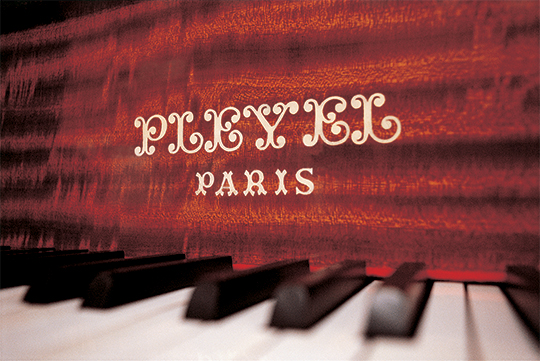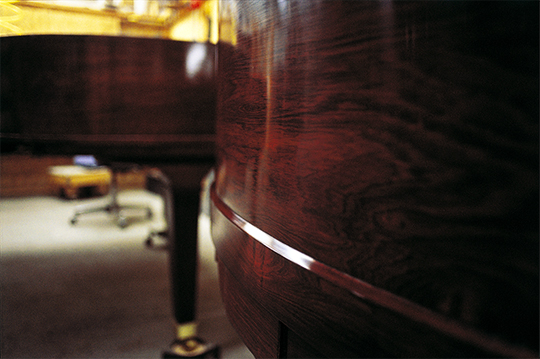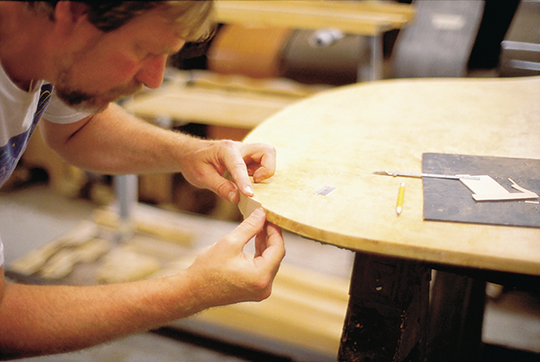
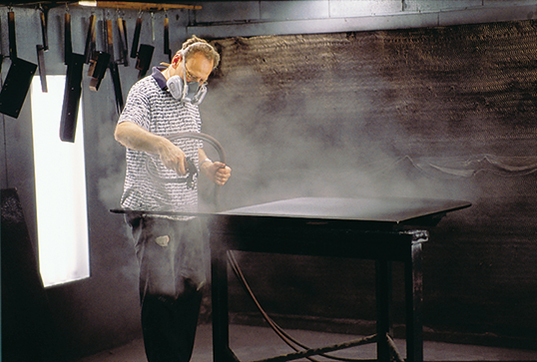
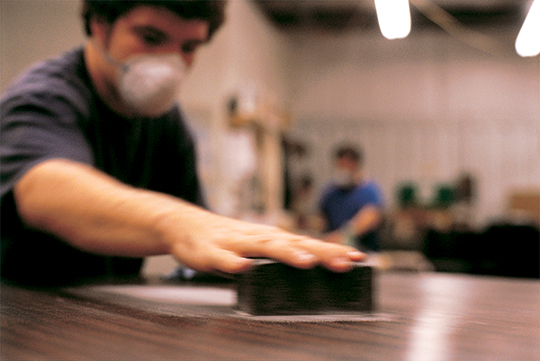
Dismantle
Piano restoration starts with the dismantling of the instrument. Notes and measurements are taken during this process to aid the assembly process. Each piano is assigned a number in order to monitor the piano and its progress. During the dismantling process, each piano part is placed in a designated area.
Refinish
At the start of the piano refinishing process, the case and the parts of the instrument are stripped of the original finish, then repaired and sanded as necessary to prepare the surface for new finish.
Finish application involves many steps, including: staining, then sealing the stain for wood finishes, filling the wood grain, sealing in the filler for clear finish or applying surface primer for ebony finishes, then applying multiple coats of ebony or clear lacquer, and sanding between coats.
After the final coats have been applied, the finish must cure for a minimum of 20 days before the rub out process begins. This process involves careful block sanding of the surface with fine sand paper for evenness, hand polishing with #0000 steel wool, and using polishing compounds to achieve the desired luster.

